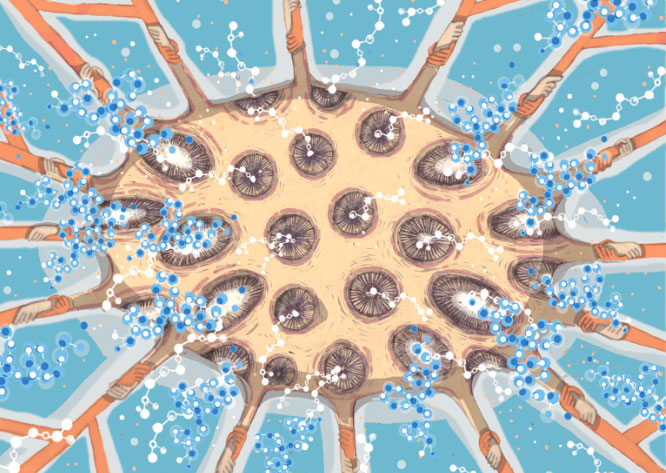Cells in our body sense mechanical stimuli from their environment and respond accordingly, making decisions about how and when to grow, move and differentiate. The process is known as mechanosensing, and it is critically important for cell function and, ultimately, for human health.

It has been shown that the direct application of force to the nucleus can affect the spatial organisation of DNA and the activity of nuclear proteins, among others. When tumour cells invade the organs and metastasis occurs, for instance, they generate physical forces that are transmitted all the way to the cell nucleus. These forces drastically affect gene expression and drive the progression of the disease.
Nuclear mechanosensing plays a central role in cancer progression by regulating tumour growth, invasion and metastasis. However, the mechanisms underlying nuclear mechanosensing are still largely unknown. The main reason for this is a lack of a technology to allow us to visualise what occurs inside the nucleus when it is subject to mechanical force.
IBEC research groups led by Pere Roca-Cusachs, IBEC group leader and Associate Professor at the University of Barcelona, have now identified a mechanism underlying nuclear mechanosensing. In a paper published in Nature Cell Biology, they show how the application of physical forces to the nucleus affects the transport of proteins across the nuclear membrane and their consequent distribution between cytoplasm and nucleus.
“It is well known that mechanical forces affect gene expression. Our work unveils a way in which this can occur”
Ion Andreu (co-first and co-corresponding author of the study) and Ignasi Granero (co-first author).
This work was done in collaboration with the theoretical modelling group of Barak Raveh (Hebrew University of Jerusalem), and the Francis Crick Institute.
Forcing protein movement
Proteins travel from the nucleus to the cytoplasm, and vice versa, via specific structures called Nuclear Pore Complexes (NPCs) in two main ways: active and passive diffusion. Passive transport is quick for small proteins, but is progressively impaired as the molecular weight of the protein increases. Active transport of larger molecules depends on the nuclear transport receptors that interact with them by binding specific sequences, known as Nuclear Localisation Signals (NLS, for proteins that enter the nucleus) or Nuclear Export Signals (NES, for proteins that exit the nucleus).
The authors found that application of physical forces to the nucleus enhances permeability across NPCs, increasing the transport of molecules. Moreover, they found that active transport increases more than passive diffusion. This differential response leads to changes in the transport of molecules through NPCs as a function of force.
The authors engineered mechanosensitive molecules by tuning their passive diffusion through NPCs, (by changing their molecular weight) and their active transport (by introducing specific NLS or NES sequences). By including a fluorescent marker in these molecules, they generated fluorescent reporters that either enter or exit the nucleus by force.
The therapeutic potential of mechanosensing
By optimising and combining these constructs appropriately, the groups of Pere Roca-Cusachs and Xavier Trepat at IBEC aim to develop light-emitting sensors that measure nuclear mechanosensing by monitoring their nuclear localisation. This is part of an ambitious project funded by the CaixaResearch Health Call of “la Caixa” Foundation.
To calibrate and validate the sensors, the researchers will later use animal models of breast and colorectal cancer. They will introduce the sensors in cancer cells of both these tissues and mice, and track their behaviour using advanced microscopy techniques. In this way, they will be able to map mechanosensing during cancer invasion and metastasis.
This work sets out a novel framework to understand how mechanics drive cancer progression, opening the door to potential new techniques for diagnosis or therapy.
Reference article: Ion Andreu, Ignasi Granero-Moya, Nimesh R. Chahare, Kessem Clein, Marc Molina-Jordán, Amy E. M. Beedle, Alberto Elosegui-Artola, Juan F. Abenza, Leone Rossetti, Xavier Trepat, Barak Raveh & Pere Roca-Cusachs. Mechanical force application to the nucleus regulates nucleocytoplasmic transport. Nat Cell Biol (2022). https://doi.org/10.1038/s41556-022-00927-7





